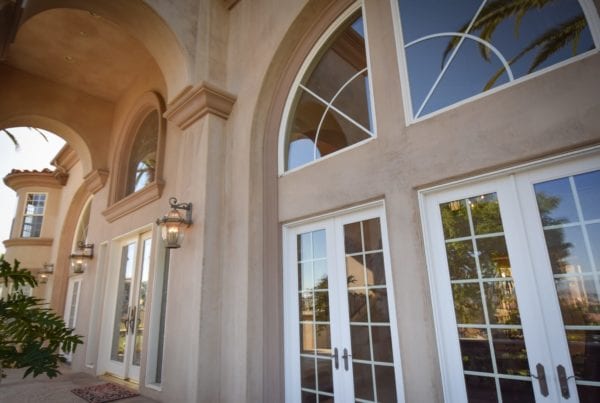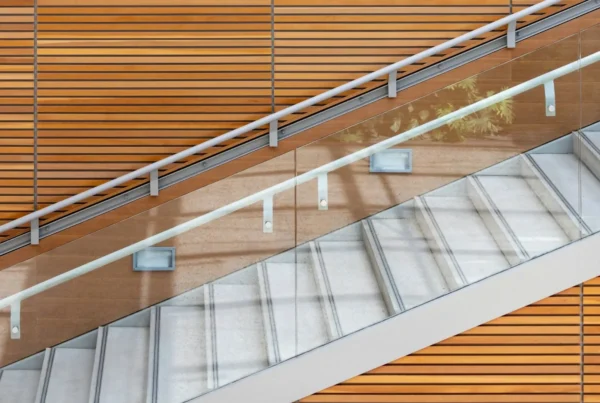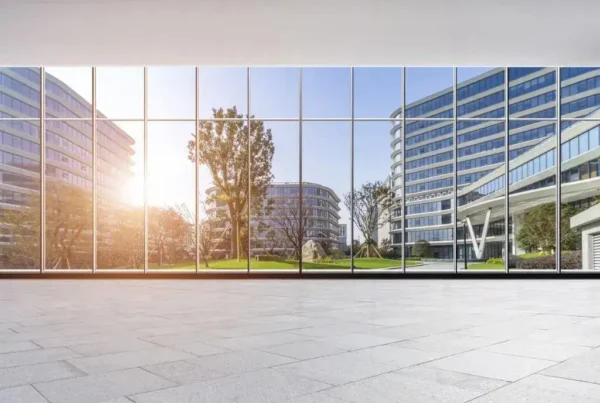If you’re responsible for the security of a commercial building, you’ve likely heard the term “access control.” But what does it really mean, and why is it so crucial for protecting your property?
Access control is an important component of any comprehensive commercial security system, playing a vital role in determining who can enter your premises and which areas they can access once inside the property.
Whether it's a simple lock-and-key system or a more advanced biometric scanner, access control measures are designed to prevent unauthorized entry and safeguard sensitive areas within your building.
In this article, we'll explore what access control is, how it works, and why it’s essential for maintaining the security and integrity of your commercial space.
What Is Access Control?
In the world of commercial building security, “access control” refers to security measures intended to prevent unauthorized access to a property or specific areas within a building.
This type of access control is also sometimes referred to in the industry as physical access control, especially when it refers to the practice of creating barriers that prevent unauthorized people from entering certain physical spaces.
Access control can take many forms. The most common type of this prolific security measure is something most of us interact with every day — door locks.
Whether you unlock your front door with a key, use a keycard to enter your place of work, or get into an Airbnb with a passcode, you’re using a type of access control to gain authorized entry to a property and restrict access to unauthorized individuals.
Other less common types of access control that you may interact with in day-to-day life include security gates, turnstiles, and physically present security personnel or other authority figures (like police), which are all used to control the flow of people past specific points of access, allowing only individuals with the proper credentials to go beyond them.
For example, a turnstile manned by venue staff checking tickets and IDs at a concert is an example of access control, as is a police officer standing in the middle of a road and preventing people from turning down it.
What Is Access Control Used for in Commercial Buildings?
Any commercial facility that’s not open to the general public typically employs one or several forms of access control to ensure only authorized individuals can get inside.
For example, corporate offices have traditionally provided their employees with keycards or key fobs that unlock entryway doors, ensuring that not just anyone can wander in off the street.
More high-security facilities, such as government buildings, might also employ security guards who buzz employees and/or visitors in, adding an extra layer of access control to boost security further.
Some types of commercial buildings also implement additional access control measures within their facilities, restricting access to certain wings, rooms, or other areas.
For instance, a hospital might have a reception area that’s open to the public, but require some sort of access control credentials in order to pass beyond that into certain areas of the broader medical facilities.
Here are a few examples of commercial buildings where access control is commonly used:
- Schools
- Office buildings and campuses
- Employee-only areas of retail stores and other facilities
- Government buildings
- Financial institutions
- Hospitals
- High-risk retail businesses
Emerging Technologies in Access Control
As security needs have evolved, so too have the technologies used in access control systems.
Today, many commercial buildings are adopting AI-driven systems, facial recognition, and integration with other smart building technologies. These innovations offer enhanced security by providing real-time analytics, remote monitoring, and more precise control over who can access specific areas.
For example, facial recognition technology can be integrated with existing security systems to allow seamless access for authorized personnel while immediately flagging unauthorized individuals. Similarly, AI-driven analytics can detect unusual patterns of access and alert security teams to potential breaches.
What Is Access Control Good At and What Are Its Limitations?
Modern access control systems are very effective at restricting who can pass through an official entryway, but they don’t necessarily protect against forced entry.
For example, a glass entryway door that requires a keycard or even facial recognition to open it won’t do anything to stop an intruder from breaking the glass with a sledgehammer and stepping through.
Because of their vulnerabilities to violent forced entry, access controlled entryways are nothing without other physical barriers to unauthorized access, such as security glazing.
Why Access Control and Security Glazing Go Hand in Hand
When we talk about using security glazing with access control, we’re referring specifically to implementing forced entry-resistant security glazing that prevents would-be intruders from simply breaking a pane of glass in a door or window to gain access to a building.
Any commercial property that has access control points should also reinforce all vulnerable windows and doors with high-performance security glazing, such as Riot Glass.
Many Riot Glass security glazing solutions can be retrofitted into or onto a commercial building’s existing window and door framing systems, typically without needing to remove or replace any of the existing glass.
This glazing looks and feels very much like traditional commercial window glass, but it creates an invisible, virtually unbreakable barrier over the existing glass to protect it from all types of impacts.
When used in tandem with controlled access entry points, retrofit security glazing can help you achieve extremely high levels of physical security against a range of intruder-based threats, including:
- Forced entry
- Burglary
- Smash-and-grab theft
- Rioting and looting
- Active threats
If a would-be intruder attempts to gain unlawful entry to a facility secured by both access control and forced entry-resistant security glazing, their attempts to bypass an access controlled entryway by smashing a window will be met with frustration, giving people inside and security personnel or the authorities time to react.
What To Look for in Access Control Systems
If you’re shopping around for new physical access control systems, there are a few different things to keep in mind.
For starters, you should decide what type of credentials you want people to use to pass your controlled access points.
For instance, keycard systems work well for most applications, and are relatively budget-friendly, but keycards also tend to wear out or get lost, and thus need to be replaced fairly frequently. Not only that, but a lost keycard can pose a security threat if it falls into the wrong hands.
Another option you have is to use mobile access control credentials, which allow people to use their smartphones to unlock doors. These systems typically have multi-factor authentication built in, and smartphones are less likely to get lost than keycards.
If it’s in your budget, manned access control points, especially at principal entrances, are one of the most secure solutions you can choose.
Whatever physical access control system you select, keep in mind the type of maintenance and management it will require.
For example, legacy access control systems that use on-site readers and servers are reliable and secure, but they often require on-site maintenance and management. For a more convenient option, consider cloud-based access control systems, which can be maintained and managed from anywhere.
How Can Commercial Building Owners Get Started with Access Control and Security Glazing?
For any commercial security retrofit project, an ideal first step is to start with a threat and risk assessment, which is essentially a commercial security consultation with a knowledgeable security expert. This expert does a full walkthrough analysis of your property to identify vulnerabilities in its security and make professional recommendations on how to fix them.
Conducting a threat assessment will provide you with actionable steps you can take to improve your building’s security by reinforcing specific windows and doors with security glazing and making certain entrances access controlled or upgrading existing access control systems.
At Campbell Glass and Films we are authorized dealers and installers of industry leading security glazing products. We can also help you get started with a professional threat assessment. Contact us today for your free consultation!





